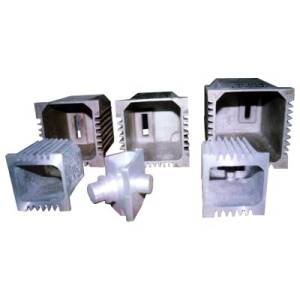Description
Gravity die casting is a versatile and cost-effective metal casting process ideal for producing high-quality parts with excellent dimensional accuracy and surface finish. This method utilizes gravity to feed molten metal into a reusable die, resulting in castings with consistent properties and minimal porosity. It bridges the gap between simpler casting methods and more complex, higher-cost processes like high-pressure die casting, offering a compelling balance of quality and affordability.
Process Overview:
The process begins with melting the desired metal (typically aluminum, zinc, magnesium, or copper alloys) in a crucible. Once molten and at the correct temperature, the molten metal is carefully poured into a preheated die cavity. Gravity alone draws the metal into the intricate mold, filling it completely. After solidification, the die is opened, and the casting is ejected. The die, being reusable, significantly reduces production costs compared to expendable mold casting methods.
Advantages of Gravity Die Casting:
- High Quality: Produces castings with excellent surface finish, requiring minimal machining. This reduces secondary operations and overall manufacturing costs.
- Good Dimensional Accuracy: Offers superior dimensional consistency compared to sand casting or investment casting, minimizing the need for extensive post-processing.
- Cost-Effective: Reusable dies significantly lower the cost per part, particularly beneficial for medium to high-volume production runs.
- Strong Mechanical Properties: Gravity die castings exhibit good mechanical strength and ductility, suitable for a wide range of applications.
- Complex Shapes: Capable of producing castings with intricate geometries and thin wall sections, although limitations exist compared to higher-pressure methods.
- Material Versatility: Suitable for a variety of metal alloys, including aluminum, zinc, magnesium, and copper-based alloys, offering design flexibility.
- Automation Potential: The process is amenable to automation, improving efficiency and reducing labor costs.
Limitations of Gravity Die Casting:
- Limited Part Complexity: While capable of producing complex shapes, extremely intricate designs or very thin sections may prove challenging.
- Lower Production Rates: Compared to high-pressure die casting, production rates are generally lower.
- Metal Limitations: Some metals with high viscosity or low fluidity may not be suitable for gravity die casting.
- Die Cost: While reusable, the initial cost of designing and fabricating the die can be significant.
Applications:
Gravity die casting is widely used across various industries, including:
- Automotive: Engine components, transmission parts, chassis parts
- Aerospace: Structural components, aircraft parts
- Machinery: Housing units, pump bodies, gearbox components
- Electronics: Heat sinks, housings
- Consumer Goods: Household appliances, lighting fix
